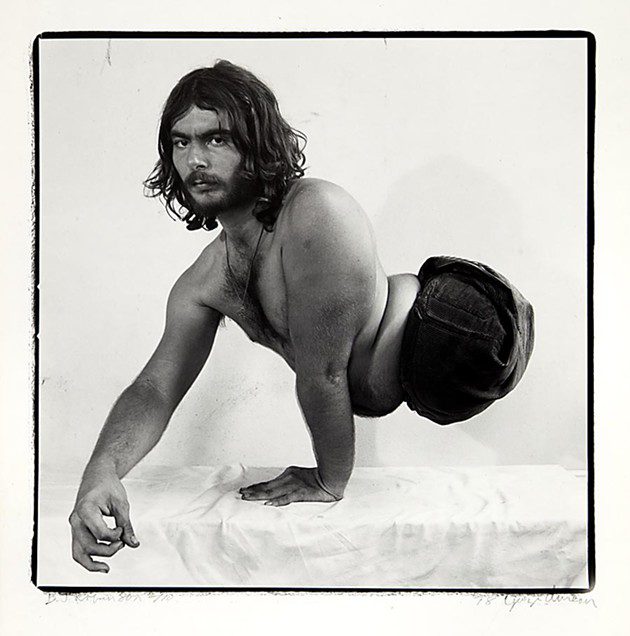D. Eric Bookhardt reviews the artist’s exhibit at Arthur Roger Gallery
by D. Eric Bookhardt, via bestofneworleans.com
 Of all the artists this city has produced, there are probably none more representative of its iconic mix of flamboyant elegance and earthy eccentricity than George Dureau. Now 82, the painter and photographer was a French Quarter fixture for decades until his recent move to an assisted living facility. Despite his dexterously deft brushwork, most of his international reputation is based on a photographic oeuvre in which all aspects of formal technique are harnessed to his genius for conveying a striking humanistic presence. In this, he profoundly influenced one of his early studio assistants, a young man named Robert Mapplethorpe, who went on to become a New York art star. But Mapplethorpe could not match his mentor’s depth, as even that city’s art critics have noted in recent years. The work seen here is a classic Dureau sampler, and while it is easy to understand the popularity of his flamboyant paintings and drawings, it is his photographs that, while not for the faint of heart, will ensure his place in art history.
Of all the artists this city has produced, there are probably none more representative of its iconic mix of flamboyant elegance and earthy eccentricity than George Dureau. Now 82, the painter and photographer was a French Quarter fixture for decades until his recent move to an assisted living facility. Despite his dexterously deft brushwork, most of his international reputation is based on a photographic oeuvre in which all aspects of formal technique are harnessed to his genius for conveying a striking humanistic presence. In this, he profoundly influenced one of his early studio assistants, a young man named Robert Mapplethorpe, who went on to become a New York art star. But Mapplethorpe could not match his mentor’s depth, as even that city’s art critics have noted in recent years. The work seen here is a classic Dureau sampler, and while it is easy to understand the popularity of his flamboyant paintings and drawings, it is his photographs that, while not for the faint of heart, will ensure his place in art history.
Perhaps ironically, Dureau was an established New Orleans painter when he began photographing his mostly male and often African-American models, a heterogeneous assortment of street people and outsiders that included muscle boys, dwarfs, amputees and occasionally bohemian women. In his paintings, they appeared as otherworldly creatures ranging from angels to centaurs in scenes rendered like bawdy, baroque interpretations of classical mythology in which Dureau himself often turns up as a satyr. But in his photographs, for instance, his portrait of B.J. Robinson (pictured), they appear as they really are yet as most of us would never see them, relaxed yet vulnerable, comfortable in the presence of someone who saw and appreciated their unique beauty and authenticity. It was Dureau’s singular genius to be able to meld Charles Baudelaire’s poetic otherworldliness with Walt Whitman’s utopian American egalitarianism in singularly striking images that reflect something of the soul of his city. — D. ERIC BOOKHARDT
